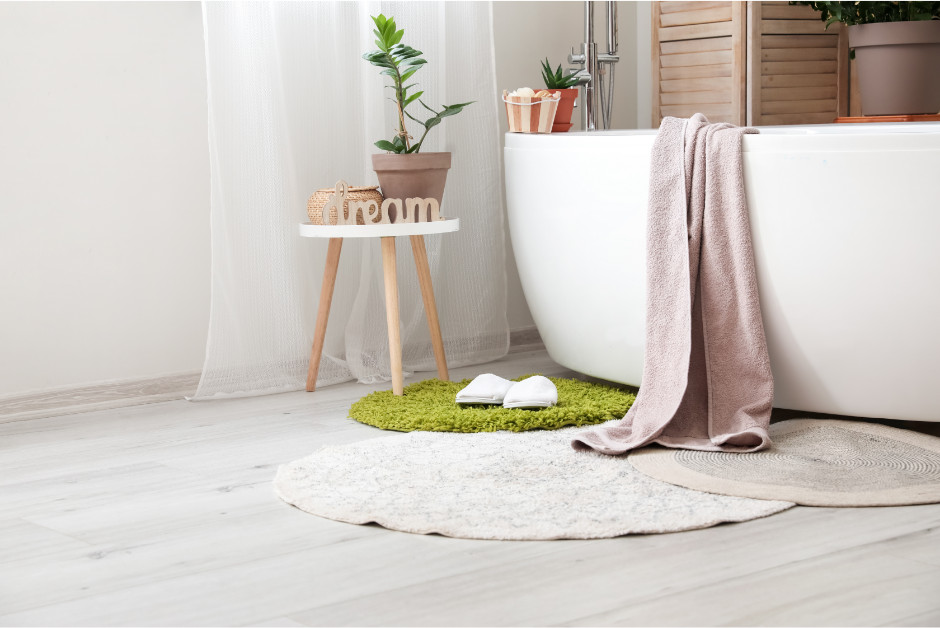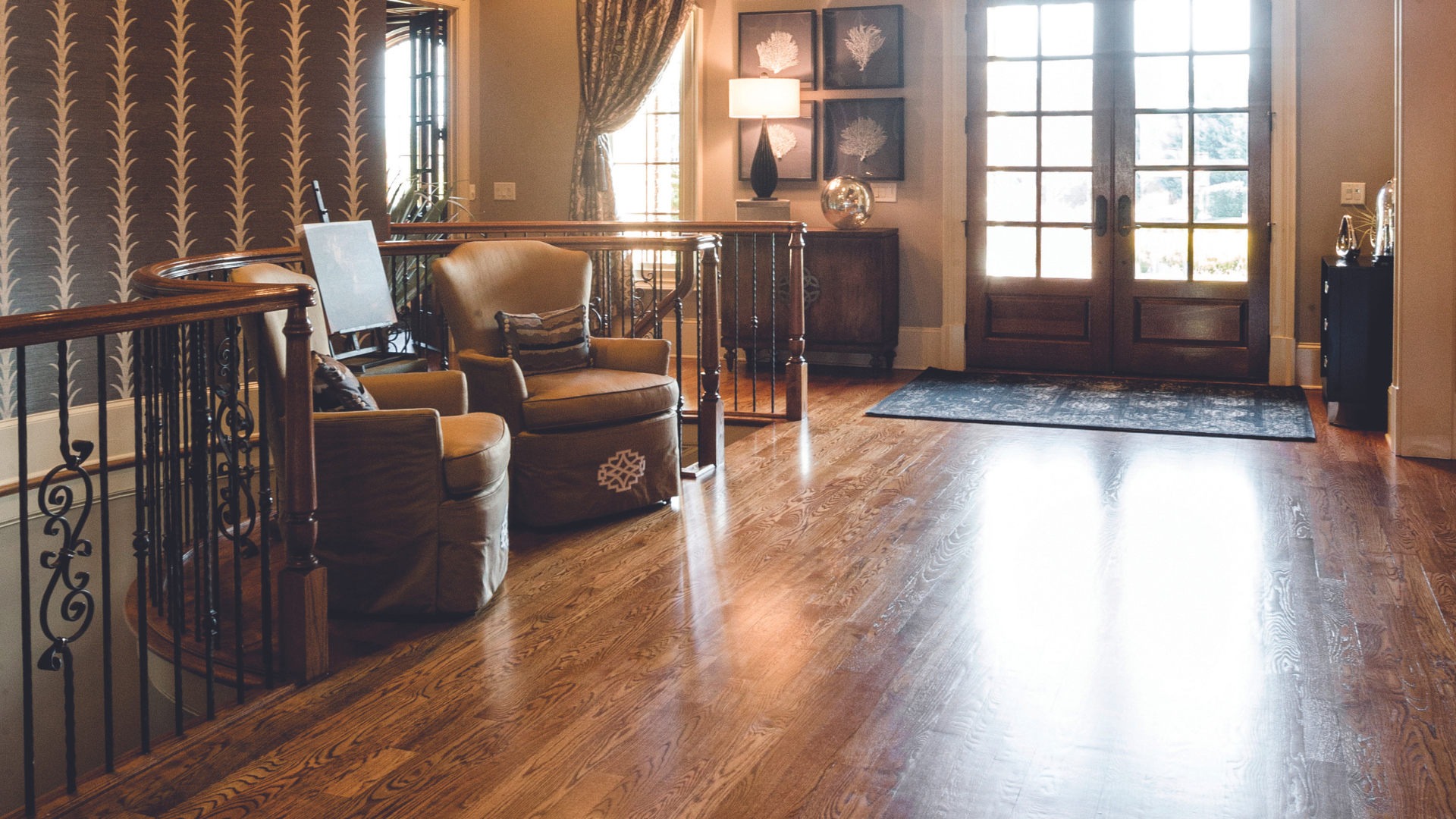Cost-effective, hard-wearing and incredibly versatile, sheet vinyl can be an excellent flooring choice for kitchens, bathrooms and commercial properties that need long-lasting flooring suitable for high footfall and busy areas.
Sheet vinyl is considered one of the easiest flooring types to install, but it can pose some challenges, especially when dealing with ample floor space. So, if you plan to lay sheet vinyl, here’s our quick-start guide.
Why choose sheet vinyl?
Quality vinyl flooring is a fantastic way to install low-maintenance but long-lasting flooring in almost every style and design. From tiles to wooden-effect, vinyl offers a huge choice to get the perfect look for your space. Luxury vinyl tiles (also known as LVT) are well known for their easy installation and are an increasingly popular choice. However, sheet vinyl is sometimes preferred in certain situations, such as installation in kitchens and bathrooms.
The benefit of sheet vinyl flooring is that it’s installed in one or two pieces which means water cannot seep through the flooring. With vinyl tiles, on the other hand, water can penetrate through the cracks in the tiles. As a result, professionals and DIYer’s often preferred sheet vinyl in spaces with a high chance of water.
How to install sheet vinyl
While DIYers prefer vinyl tiles, professionals usually install vinyl sheet flooring. However, with a few tricks from the trade, it is possible to install sheet vinyl quickly and easily.
Tools
- Scissors
- Metal straightedge
- Sharp knife
- Bolster chisel
- Vinyl adhesive
- Hand roller
Preparation
Before laying sheet vinyl, it is essential to take time to prepare the vinyl and the space too. The first thing is to store the vinyl roll in the room where you will install it or close by for around 48 hours before installation. Cold temperatures can make vinyl brittle, so bringing it to room temperature makes the sheet vinyl easier to install without damage.
You’ll then want to remove doors to help you easily lay vinyl around the door frame.
The next step is removing the old flooring from the room and ensuring you have a clean, smooth floor ready for vinyl flooring. Ensure no cracks, holes, lumps or damage to the floor. If there are lumps and bumps, this can show through the vinyl, so the floor will either needs sanding to level it or corrected with a floor levelling solution.
You’re ready for installation when the floor is completely smooth and free from dust and debris.
How to lay sheet vinyl
Follow the skirting
Unroll the vinyl along the room’s longest side of the clearest wall. Make sure the vinyl fits snugly against the skirting with no gaps. If your skirting isn’t completely straight, you may need to cut the vinyl to follow the skirting line.
Tip: To cut the vinyl to fit the skirting. Lay the vinyl 25 mm away from the skirting. Then find a small wood offcut and hammer a nail into the wood 30 mm from one end, ensuring the sharp point of the nail sticks out. After that, run the block of wood along the outline of the skirting. The sharp nail will trace the skirting outline onto the vinyl. Then you need to cut along the sharp line created to ensure it fits smoothly against the edge of the room.
Manage corners with notches
As you get to corners, cut notches in the sheet vinyl flooring with scissors so that the vinyl lays flat on the floor with the excess sitting vertically up the wall.
For curves, you may need to create several notches to ensure it lays flat on the floor.
Use a chisel on the edges
Gently push the vinyl as close to the skirting as possible using a chisel and make a sharp crease for a smooth, clean cut. Use a metal straightedge with a sharp knife to ensure a straight, professional cut to the vinyl.
Lay vinyl with adhesive
When you’re happy with the final cut of the vinyl, and it is entirely smooth across the room, it is time to glue the vinyl into position. Gently roll up the edges of the vinyl sheet and use an adhesive spray or double-sided tape to secure the vinyl to the subfloor.
Pattern match for separate sheets
If you need to use multiple rolls of vinyl, take time to work out the position in terms of pattern-matching the second sheet to the first sheet. This helps to ensure a professional finish.
Finish with a hand roller
Use a hand roller over the floor to ensure the vinyl is stuck to the subfloor and is entirely smooth and laying flat. Doing this s can help prevent the vinyl sheet from curling up at the edges and creates a crisp finish.
- Wear knee pads for comfort
- Always check your vinyl flooring is suitable; for example, if you have underfloor heating
- If the room is cold during installation, pop heaters on to make the vinyl more flexible
- Even if the vinyl is loose lay, you may want to use adhesive in areas where it may peel up, such as doors
- Take time to get the direction of the vinyl flooring right before installation.





Comments are closed.